Minamoto clan
| Minamoto Nguyên thị | |
|---|---|
 | |
| Home province | Heian-kyō(ModernKyōto) |
| Parent house | Imperial House of Japan (Emperor Saga) |
| Titles | Shogun,Daimyō,Kuge,Daijō-daijin,Sadaijin,Udaijin,Kazoku,and others |
| Founder | Minamoto no Makoto(first recorded) |
| Founding year | May814(1210 years ago) |
| Ruled until | still extant |
| Cadet branches | |
Minamoto(Nguyên)was anoblesurname bestowed by theEmperors of Japanupon members of theimperial familywho were excluded from theline of successionand demoted into the ranks ofthe nobilitysince 814.[1][2][3]Several noble lines were bestowed the surname, the most notable of which was theSeiwa Genji,whose descendants established theKamakuraandAshikagashogunatesfollowing the Heian era. The Minamoto was one of the four greatclansthat dominated Japanese politics during theHeianperiod inJapanese history—the other three were theFujiwara,theTaira,and theTachibana.[4][5]
In the late Heian period, Minamoto rivalry with the Taira culminated in theGenpei War(1180-1185 AD). The Minamoto emerged victorious and established Japan's firstshogunateinKamakuraunderMinamoto no Yoritomo,who appointed himself asShōgunin 1192, ushering in theKamakura period(1192–1333 AD) of Japanese history. The name "Genpei" comes fromalternate readingsof thekanji"Minamoto" ( nguyênGen) and "Taira" ( bìnhHei).
The Kamakura Shogunate was overthrown byEmperor Go-Daigoin theKenmu Restorationof 1333. Three years later the Kenmu government would then itself be overthrown by theAshikaga clan,descendants of the Seiwa Genji who established theAshikaga shogunate(1333 to 1573).
The Minamoto clan is also called theGenji(Nguyên thị,"Minamoto clan" ),or less frequently, theGenke(Nguyên gia,"House of Minamoto" ),using theOn'yomireadings ofgen(Nguyên)for "Minamoto", whileshiorji(Thị)means "clan",andke(Gia)is used as a suffix for "extended family".[6]
History[edit]
TheEmperors of Japanbestowed noble surnames upon members of theimperial familywho were excluded from theline of successionand demoted into the ranks ofthe nobility.[1][2][3]In May 814, the firstemperorto grant the surname "Minamoto" wasEmperor Saga,to his seventh son—Minamoto no Makoto,inHeian-Kyō(modernKyōto).[7][2]: 18 [3]The practice was most prevalent during the Heian period (794–1185 AD), although its last occurrence was during theSengoku period.TheTairawere another such offshoot of theimperial dynasty,making both clans distant relatives.[8]
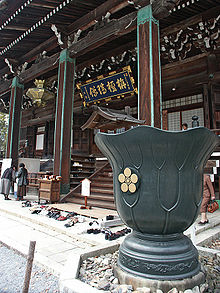
The most prominent of the several Minamoto families, theSeiwa Genji,descended fromMinamoto no Tsunemoto(897–961), a grandson ofEmperor Seiwa.Tsunemoto went to the provinces and became the founder of a major warrior dynasty.Minamoto no Mitsunaka(912–997) formed an alliance with the Fujiwara. Thereafter the Fujiwara frequently called upon the Minamoto to restore order in the capital,Heian-Kyō(modernKyōto).[9]: 240–241 Mitsunaka's eldest son,Minamoto no Yorimitsu(948–1021), became the protégé ofFujiwara no Michinaga;another son,Minamoto no Yorinobu(968–1048) suppressed the rebellion ofTaira no Tadatsunein 1032. Yorinobu's son,Minamoto no Yoriyoshi(988–1075), and grandson,Minamoto no Yoshiie(1039–1106), pacified most of northeastern Japan between 1051 and 1087.[9]

The Seiwa Genji's fortunes declined in theHōgen Rebellion(1156), when the Taira executed most of the line, includingMinamoto no Tameyoshi.During theHeiji Disturbance(1160), the head of the Seiwa Genji,Minamoto no Yoshitomo,died in battle.[9]: 256–258 Taira no Kiyomoriseized power in Kyoto by forging an alliance with the retired emperorsGo-ShirakawaandTobaand infiltrating thekuge.He sentMinamoto no Yoritomo(1147–1199), the third son of Minamoto no Yoshimoto of the Seiwa Genji, into exile. In 1180, during theGenpei War,Yoritomo mounted a full-scale rebellion against the Taira rule, culminating in the destruction of the Taira and the subjugation of eastern Japan within five years. In 1192, he received the titleshōgunand set up the firstbakufuin the history of Japan atKamakura—Kamakura shogunate.[9]: 275, 259–260, 289–305, 331
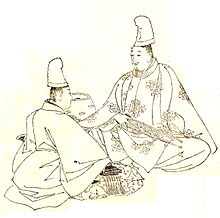
The laterAshikaga(founders of theAshikaga shogunateofMuromachi period),Nitta,Takeda,andTokugawa(founders of theTokugawa shogunateofEdo period) clans claim descents from the Minamoto clan (Seiwa Genji branch).[10][11]

Theprotagonistof the classical Japanese novelThe Tale of Genji(The Tale of Minamoto clan)—Hikaru Genji,was bestowed the name Minamoto for political reasons by his father the emperor and was delegated to civilian life and a career as an imperial officer.
TheGenpei Waris also the subject of the early Japanese epicThe Tale of the Heike(Heike Monogatari).[12]
Members of the Minamoto clan (Genji clan)[edit]
Even withinroyaltythere was a distinction between princes with the titleshinnō(Thân vương),who could ascend to the throne, and princes with the titleō(Vương),who were not members of the line of imperial succession but nevertheless remained members of theroyal class(and therefore outranked members of Minamoto clans). The bestowing of the Minamoto name on a (theretofore-)prince or his descendants excluded them from the royal class altogether, thereby operating as a reduction in legal and social rank even forō-princes not previously in the line of succession.

Many later clans were formed by members of the Minamoto clan, and in many early cases, progenitors of these clans are known by either family name. There are also knownmonksof Minamoto descent; these are often noted in genealogies but did not carry the clan name (in favour of adharma name).

The Minamoto is the ancestor and parent clan of many notable descendant clans, some of which areAshikaga,Tokugawa,Matsudaira,Nitta,Takeda,Shimazu,Sasaki,Akamatsu,Kitabatake,Tada,Ota,Toki,Yamana,Satomi,Hosokawa,Satake,Yamamoto, Hemi,Ogasawara,Yasuda,Takenouchi, Hiraga,Imagawa,Miyake,etc.[13]
There were 21 branches of the clan, each named afterthe emperorfrom whom it descended. Some of these lineages were populous, but a few did not produce descendants.
Saga Genji[edit]
The Saga Genji are descendants ofEmperor Saga.As Saga had many children, many were bestowed theujiMinamoto, declassing them from imperial succession. Among his sons,Makoto,Tokiwa,andTōrutook the position of Minister of the Left (sadaijin); they were among the most powerful in the Imperial Court in the earlyHeian period.Some of Tōru's descendants in particular settled the provinces and formedbuke.Clans such as theWatanabe,Matsuura,andKamachidescend from the Saga Genji.[14]

Noted Saga Genji and descendants include:
- Minamoto no Makoto,seventh son of the Emperor
- Minamoto no Hiromu,eighth son of the Emperor
- Minamoto no Hitoshi,grandson of Hiromu
- Minamoto no Tokiwa,son of the Emperor
- Minamoto no Okoru,first son of Tokiwa
- Minamoto no Sadamu,son of the Emperor
- Minamoto no Shitagō,great-grandson of Sadamu
- Minamoto no Hiroshi,son of the Emperor
- Minamoto no Tōru,son of the Emperor
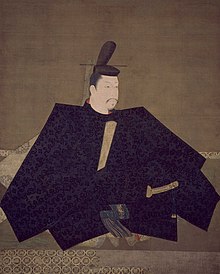
Portrait ofMinamoto no Yoritomo(1147–1199) in 1179, byFujiwara no Takanobu - Minamoto no Anbō(secular name Minamoto no Shitagō), great-grandson of Tōru
- Watanabe no Tsuna(his official name wasMinamoto no Tsuna,who resided at Watanabe in Settsu province, and took the name of the place), great-great-grandson of Tōru
- Matsuura Hisashi,great-grandson of Tsuna
- Minamoto no Koreshige,grandson of Tōru
- Minamoto no Mitsusue,great-great-grandson of Koreshige
- Minamoto no Tsutomu,son of the Emperor
- Minamoto no Hiraku,son of the Emperor
History records indicate that at least three of Emperor Saga's daughters were also made Minamoto (Minamoto no Kiyohime,Minamoto no Sadahime,andMinamoto no Yoshihime), but few records concerning his daughters are known.

Ninmyō Genji[edit]
They were descendants ofEmperor Ninmyō.His sonsMinamoto no MasaruandMinamoto no Hikaruwereudaijin.Among Hikaru's descendants wasMinamoto no Atsushi,adoptive father of the Saga Genji'sWatanabe no Tsunaand father of the Seiwa Genji'sMinamoto no Mitsunaka's wife.
Montoku Genji[edit]
These were descendants ofEmperor Montoku.Among them,Minamoto no Yoshiariwas asadaijin,and among his descendants were theSakado clanwho wereHokumen no Bushi.
Seiwa Genji[edit]
These were descendants ofEmperor Seiwa.The most numerous of them were those descended fromMinamoto no Tsunemoto,son ofPrince Sadazumi.Hachimantarō Yoshiieof theKawachi Genjiwas a leader of abuke.His descendants set up theKamakura shogunate,making his a prestigious pedigree claimed by manybuke,particularly for the direct descendants in theAshikaga clan(that set up theAshikaga shogunate) and the rivalNitta clan.Centuries later,Tokugawa Ieyasuwould claim descent from the Seiwa Genji by way of the Nitta clan.[14]
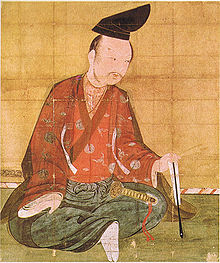
Yōzei Genji[edit]
These were descendants ofEmperor Yōzei.WhileMinamoto no Tsunemotois termed the ancestor of the Seiwa Genji, there is evidence (rediscovered in the late 19th century byHoshino Hisashi) suggesting that he was actually the grandson of Emperor Yōzei rather than of Emperor Seiwa. This theory is not widely accepted as fact, but as Yōzei was deposed for reprehensible behaviour, there would have been a compelling motive to claim descent from more auspicious origins if it were the case.
Kōkō Genji[edit]
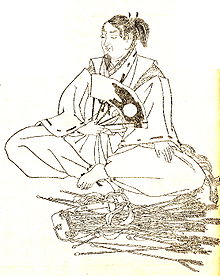
These were descendants ofEmperor Kōkō.The great-grandson of his firstbornPrince Koretada,Kōshō,was the ancestor of a line ofbusshi,from which various styles of Buddhist sculpture emerged. Kōshō's grandsonKakujoestablished theShichijō Busshoworkshop.
Uda Genji[edit]
These were descendants ofEmperor Uda.Two sons ofPrince Atsumi,Minamoto no MasanobuandMinamoto no Shigenobubecamesadaijin.Masanobu's children in particular flourished, forming fivedōjōhouses askuge,and asbuketheSasaki clanof theŌmi Genji,and theIzumo Genji.

Daigo Genji[edit]
These were descendants ofEmperor Daigo.His sonMinamoto no Takaakirabecame asadaijin,but his downfall came during theAnna incident.Takaakira's descendants include theOkamotoandKawajiriclans. Daigo's grandsonMinamoto no Hiromasawas a reputed musician.
Murakami Genji[edit]
These were descendants ofEmperor Murakami.His grandsonMorofusawas anudaijinand had many descendants, among them several houses ofdōjōkuge.Until theAshikaga clantook it during theMuromachi period,the title ofGenji no Chōjaalways fell to one of Morofusa's progeny.

Reizei Genji[edit]
These were descendants ofEmperor Reizei.Though they are included among the listing of 21 Genji lineages, no concrete record of the names of his descendants made Minamoto is known to survive.
Kazan Genji[edit]
These were descendants ofEmperor Kazan.They became thedōjōShirakawa family,which headed theJingi-kanfor centuries, responsible for the centralised aspects ofShinto.

Sanjō Genji[edit]
These were descendants ofEmperor Sanjō's sonPrince Atsuakira.Starting with one of them,Minamoto no Michisue,the position ofŌkimi-no-kami(chief genealogist of the imperial family) in theMinistry of the Imperial Householdwas passed down hereditarily.
Go-Sanjō Genji[edit]
These were descendants ofEmperor Go-Sanjō's sonPrince Sukehito.Sukehito's sonMinamoto no Arihitowas asadaijin.Minamoto no Yoritomo's vassalTashiro Nobutsuna,who appears in theTale of the Heike,was allegedly Arihito's grandson (according to theGenpei Jōsuiki).

Go-Shirakawa Genji[edit]
This line consisted solely ofEmperor Go-ShirakawasonMochihito-ō(Takakura-no-Miya). As part of the succession dispute that led to the opening hostilities of theGenpei War,he was declassed (renamed "Minamoto no Mochimitsu") and exiled.
Juntoku Genji[edit]
These were descendants ofEmperor Juntoku's sonsTadanari-ōandPrince Yoshimune.The latter's grandsonYoshinarirose tosadaijinwith the help ofAshikaga Yoshimitsu.
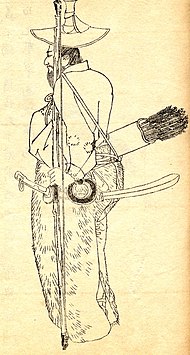
Go-Saga Genji[edit]
This line consisted solely ofEmperor Go-Saga's grandsonPrince Koreyasu.Koreyasu-ō was installed as a puppetshōgun(the seventh of theKamakura shogunate) at a young age, and was renamed "Minamoto no Koreyasu"a few years later. After he was deposed, he regained royal status, and became a monk soon after, thereby losing the Minamoto name.

Go-Fusakusa Genji[edit]
These were descendants ofEmperor Go-Fukakusa's sonPrince Hisaaki(the eighthshōgunof theKamakura shogunate). Hisaaki's sonsPrince Morikuni(the nextshōgun) andPrince Hisayoshiwere made Minamoto. Hisayoshi's adopted "nephew" (actuallyNijō Michihira's son)Muneakibecame agon-dainagon(actingdainagon).
Ōgimachi Genji[edit]
These were non-royal descendants ofEmperor Ōgimachi.At first they werebuke,but they later becamedōjō-ke,theHirohata family.
Legacy[edit]
Historical periods and cities founding[edit]

- Kamakura periodandKamakura city,which were established and founded byMinamoto no Yoritomo—the firstshōgunof Japan.
- Muromachi periodwas founded byshōgunAshikaga Takauji—a direct descendant ofMinamoto no Yoshiyasu(also known asAshikaga Yoshiyasu).
- Edo periodwas founded byshōgunTokugawa Ieyasu—who claimed to be a descendant ofMinamoto no Yoshishige(also known asNitta Yoshishige).
Shinto shrines founding[edit]

- Three Genji Shrines(Nguyên thị tam thần xã,Genji San Jinja)- A group of Shinto shrines connected closedly with the members ofSeiwa Genjibranch of the Minamoto clan.
- Sasaki Shrine(Sa sa quý thần xã)- a Shinto shrine connected closely with the members ofUda Genjibranch of the Minamoto clan.
Literature and arts[edit]
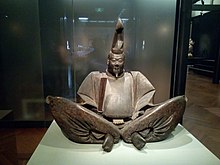
- The Tale of Genji(Nguyên thị vật ngữ,Genji monogatari,The Tale of the Minamoto clan)byMurasaki Shikibu,an important 11th-century classical Japanese novel.

Genji monogatari - The Tale of the Heike(Bình gia vật ngữ,Heike Monogatari,The Tale of house of Taira),a 14th-centuryepic poetrycompiled of the struggle between the Minamoto clan and theTaira clanfor control of Japan at the end of the 12th century in theGenpei War(1180–1185).
See also[edit]
References[edit]
- ^ab"...the Minamoto (1192-1333)" Warrior Rule in Japan, page 11. Cambridge University Press.
- ^abcThương bổn, nhất hoành (2019-12-18).Công gia nguyên thị: Vương 権を chi えた danh tộc(in Japanese). Japan: Trung ương công luận tân xã. p. 18.ISBN9784121025739.
- ^abcTỉnh thượng, thần hùng (2011).Tha nga thiên hoàng と văn nhân quan liêu(in Japanese). Japan: Xác thư phòng. pp. 305–306.ISBN9784827312409.
- ^Gibney, Frank (1984).Britannica International Encyclopedia.TBS-Britannica. Shisei: "Genji".OCLC47462068.
- ^Frédéric, Louis (2002).Japan Encyclopedia.Cambridge, Massachusetts: Harvard University Press. pp. 439–452.ISBN9780674017535.
- ^Lebra, Takie Sugiyama (1995).Above the Clouds: Status Culture of the Modern Japanese Nobility.University of California Press.ISBN9780520076020.
- ^Frederic, Louis (2002).Japan Encyclopedia.Cambridge, Massachusetts: Harvard University Press.
- ^Kuehn, John T. (2014).A military history of Japan: from the age of the Samurai to the 21st century.Santa Barbara, Calif.: Praeger. p. 36.ISBN978-1-4408-0394-9.
- ^abcdSansom, George (1958).A History of Japan to 1334.Stanford University Press. pp. 241–242, 247–252.ISBN0804705232.
- ^Frederic, Louis; Louis-Frédéric (2002).Japan Encyclopedia.Harvard University Press. p. 53.ISBN978-0-674-01753-5.
- ^Zöllner, Reinhard (2018-02-15).Die Ludowinger und die Takeda: Feudale Herrschaft in Thüringen und Kai no kuni(in German). BoD – Books on Demand. p. 127.ISBN978-3-7448-8682-6.
- ^Watson, Burton; Shirane, Haruo (2006-06-27).The Tales of the Heike.Columbia University Press. p. 4.ISBN978-0-231-51083-7.
- ^Papinot, Jacques Edmond Joseph (1906).Nobiliaire du Japon(PDF)(in French). Dortmund; München: Oliver Rost; Stefan Unterstein. pp. 3–73.
- ^abCao đẳng học giáo cải đính bản cổ điển A đại kính nguyên thị vật ngữ chư gia の văn chương(PDF)(in Japanese) (4th ed.). Chu thức hội xã đệ nhất học tập xã. 2018. pp. 43–56.ISBN978-4-8040-1075-5.
